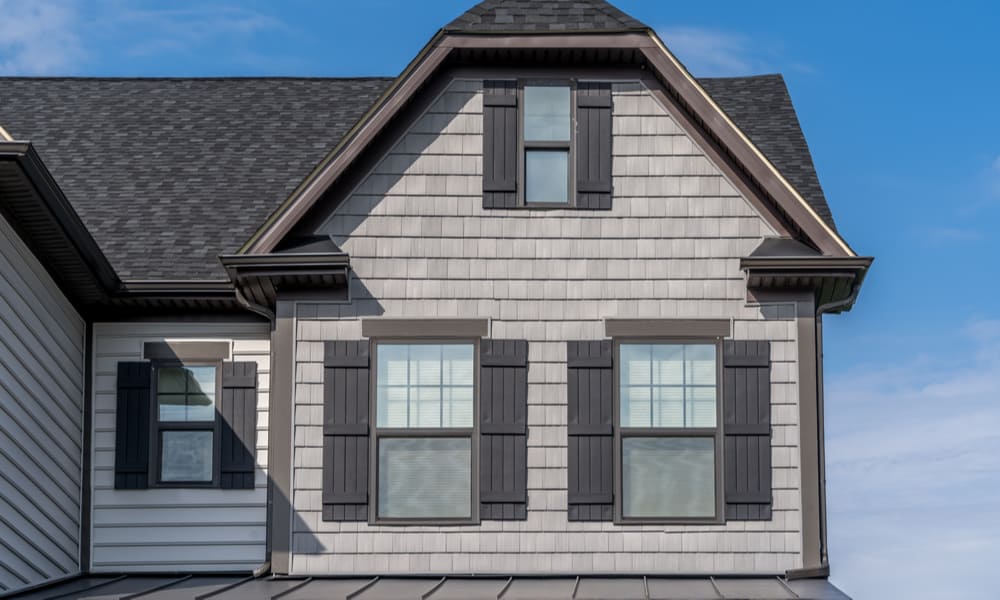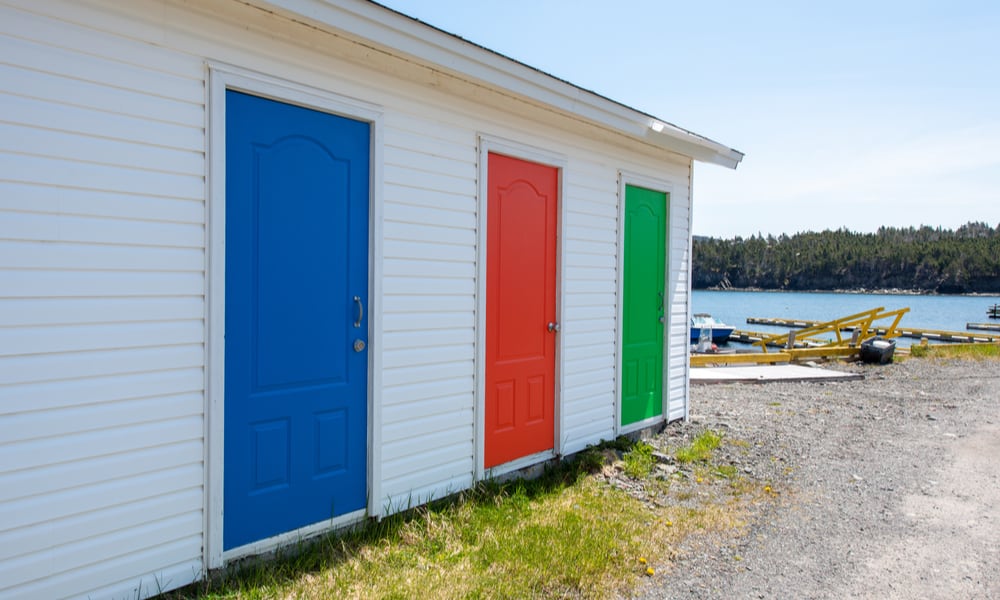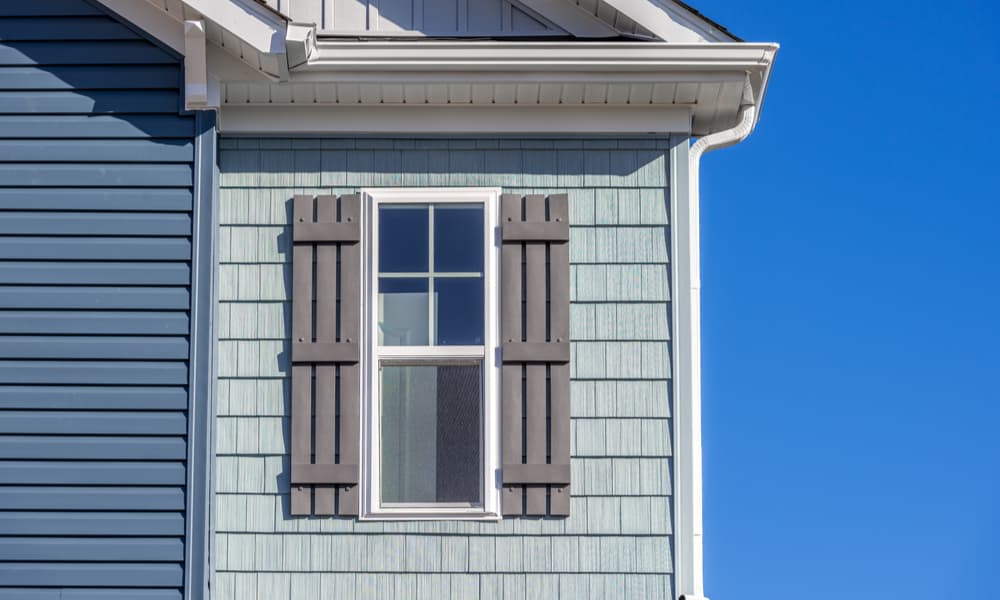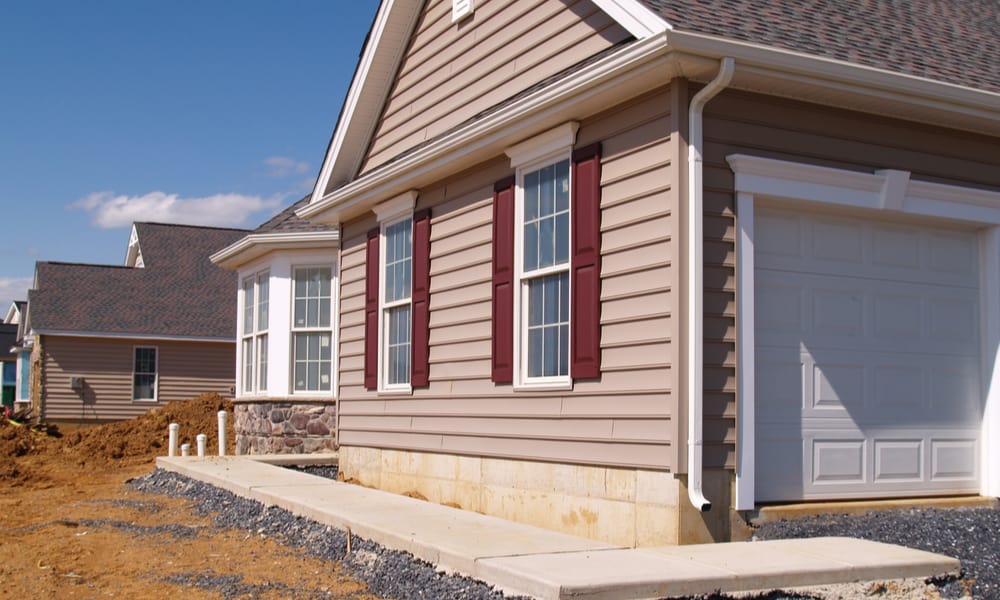Choosing the right exterior treatment options can be challenging, especially when the difference between siding profiles is minimal. For instance, what is the difference between Dutch lap vs. traditional vinyl siding? When to choose one over the other?
In short, the main distinguishing factor between the two is the aspect. Although both profile styles consist of overlapping planks, the Dutch lap siding is characterized by a concave edge that curves into a notched overlap. This lapping style creates attractive shadow lines that add visual texture – especially when looking at the house from afar.
Traditional vinyl siding looks quite similar from a close distance. However, the straight edges don’t create the stylish shadows the Dutch lap is famous for. Curious about other differences and how to pick? Read on.
Table of Contents
What Is Dutch Lap Siding?

Dutch lap is a variant of clapboard siding. Traditionally made of wood, most Dutch lap siding nowadays is made of vinyl.
The Dutch lap panels are characterized by a sharp bevel that creates a contrast between the planks. Moreover, this type of siding has deep troughs designed to create a strong shadow line.
Originally, Dutch lap siding had hand-carved edges, a feature that used to drive up the style’s cost. Although vinyl siding is not hand-carved, the highly desirable look is still more expensive than clapboard or traditional siding.
While Dutch lap siding pairs well with most architectural styles, it is best matched with Victorian style buildings and Greek revivals.
What Is Traditional Vinyl Siding?

Traditional vinyl siding is often mistakenly called clapboard. However, although both clapboard and traditional siding have the same design, there is a slight difference between the two.
Clapboard is the first type of external treatment used in the US, designed with long and narrow boards of around four inches wide. Traditional vinyl siding uses the same plank design, but the width of the boards varies from six to seven inches.
Similar to Dutch lap, traditional siding consists of overlapped planks – or the illusion of overlapped planks if you opt for vinyl panels. However, the edge of each board is straight, the panel missing those stylish shadows Dutch lap siding is famous for.
This isn’t necessarily a bad thing, however. Because builders used this type of siding on the first Colonial homes, traditional vinyl panels are still preferred for Colonial homes. Ranches and historic homes also benefit from the traditional siding.
Dutch Lap vs. Traditional Vinyl Siding: Overall Comparison
Deciding between two types of strikingly similar siding is far from easy. In addition to the architectural style of your home, you may also have budget considerations. Here’s a side-by-side comparison of the two siding types so that you can pick the right one for you.
1. Design

Essentially, both Dutch lap and traditional siding consist of narrow planks laid horizontally over the building façade. Nowadays, both styles are made on vinyl, meaning that you don’t have to install individual planks but larger siding panels.
Due to the material’s properties and panel design – vinyl is rather thin and lightweight, while the panels are relatively large in size – both siding styles are a cinch to install. The only thing to pay attention to is to start level and keep your work straight.
When it comes to siding colors, you can pick from various shades regardless of the style you wish to go with. Popular options include white, light gray, dark gray, tan, beige, and even bolder choices like red, green, yellow, and blue. However, you should consider the type of siding when deciding the color.
In fact, Dutch lap siding tends to look better in lighter hues that help emphasize the shadow created by the notch. Thus, if you want to install Dutch lap siding, you should consider white, cream, or light gray.
Traditional vinyl siding doesn’t have an emphasized shadow, so it looks great in darker colors too. However, you should consider the style of your home before deciding. If you have a colonial house, for instance, a traditional shade like white, light gray, or cream could be best.
A ranch or countryside cottage would look great in lighter shades of brown, red, but also green or light blue.
For a modern home – or a modern twist on a traditional building – you can opt for bolder options like darker green, navy, darker gray, or red. Black siding is not very popular, but it could be an option if you don’t mind a nonconformist aesthetic.
2. Durability

Considering that both Dutch lap and traditional siding are made of vinyl, there isn’t a significant difference in durability. The material is low-maintenance, only requiring occasional cleaning – a pressure washer works wonders for the purpose.
The most frequent problems with vinyl are buckling, warping, and chipping. If you want a more durable option, insulated siding comes as an excellent alternative.
Another alternative is Dutch lap siding made of wood. If maintained well, this choice is more durable. However, wooden siding is more expensive and harder to maintain. Moreover, wood is an organic material that attracts termites. Vinyl is less welcoming, but insects and spiders could build nests in the hollow spaces between the siding and the walls.
3. Cost

There isn’t a significant difference in cost when it comes to Dutch lap vs. traditional vinyl siding – provided that the former is also made of vinyl. On average, traditional vinyl siding will cost you between $1 and $7 per square foot, the cost including installation.
Dutch lap siding is slightly more expensive, its price ranging from $2.75 to $8 per square foot. Thus, for a 2,000 square feet surface, you can expect to pay up to $14,000 for traditional vinyl siding and up to $16,000 for Dutch lap.
If you decide to install wood Dutch lap, however, the price could double up. On average, you can expect to pay between $8 and $12 per square foot, so up to $24,000 for a 2,000 square feet surface.
The texture of the siding can also influence the cost. Smooth panels are generally the cheapest, but it tends to look out of place on traditional homes. Modern architecture, however, pairs well with the clean lines. Wood grain siding is preferred for traditional homes, but these panels are generally more expensive.
Which Siding Is Best?
It is hard to tell which siding is best – ultimately, it comes down to preference, budget, and style of your home.
If you live in a country home, cottage, or Colonial house, traditional vinyl siding may be a better choice. Closely resembling clapboard, it is the type of siding originally used in these architectural styles.
Victorian or Greek style homes would benefit more from Dutch lap siding. Modern architecture looks great with either style, but you should stick to a smooth texture.
Other Vinyl Siding Profiles

Now that you know what the differences between Dutch lap vs. traditional vinyl siding are, you may wonder whether there are other profile styles you can choose from. As a matter of fact, there are. Let’s check them out:
- Beaded seam siding: Similar to the Dutch lap but more elaborated, this siding type has a round notch cut into the bottom edge of each plank. Generally characteristic of upscale homes, this siding used to be very expensive. Nowadays, vinyl options are available – and more cost-effective compared to wood siding.
- Cedar shake siding: Made of wedge-shaped sections of cedar wood, this siding gives off a rustic feel.
- Traditional shake siding: Almost identical to cedar siding, traditional shake siding is now made of vinyl and comes in multiple colors. The most popular is a light gray that reminds of cedar wood, but you can also opt for white, cream, tan, blue, green, or red. Once installed, the siding displays straight shadow lines.
- Half-shake siding: Made of wood or vinyl, this siding is made of individual shingles installed in a mismatched pattern. The aspect is more rustic and gives off more complex shadow lines.
- Scalloped siding: Also called fish scale or half-round, scalloped siding was originally made of half-round shingles that created a refined look.
- Log vinyl siding: Designed to match the aspect of log cabins, this type of siding is perfect for a rural context. Once installed, it gives your home that desired log cabin impression. The panels are made of vinyl and come in numerous choices that match the various types of logs. Like all vinyl sidings, log vinyl siding is low-maintenance and easy to install.
In Conclusion
Dutch lap and traditional vinyl siding are two popular types of clapboard siding. Nowadays, both options are made of vinyl, and the only important difference between the two is the style. Dutch lap is also slightly more expensive than traditional siding.
That said, both of them are affordable and available in multiple colors. Choosing one over the other really comes down to preference, although you should consider the style of your home to make sure you’ve picked the best match.
Now, it’s down to you. What type of siding would you choose, Dutch lap or traditional? Tell us in a comment below and before you go, don’t forget to share this article with your friends.